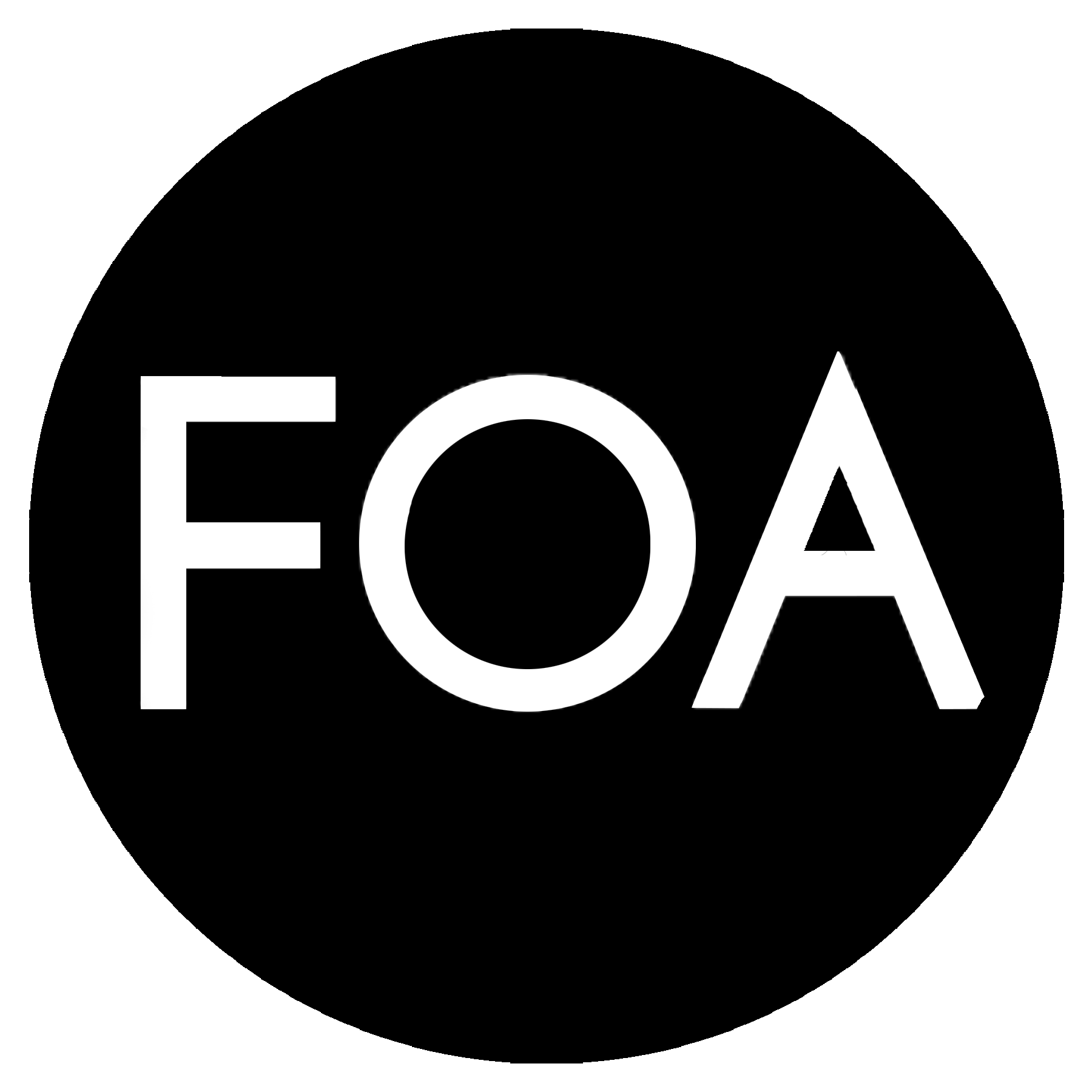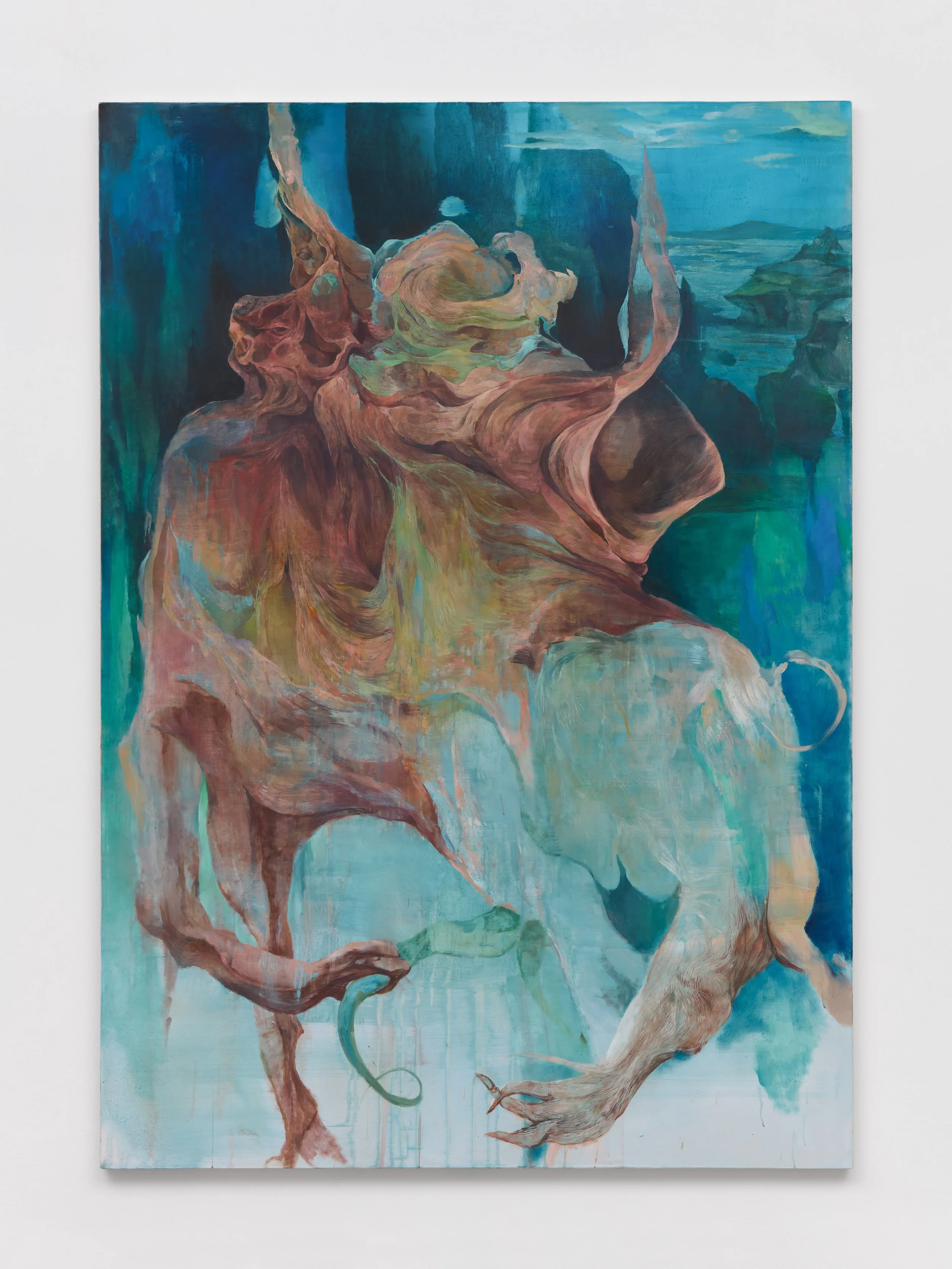Interview with Daria Dmytrenko
DARIA DMYTRENKO
Daria Dmytrenko (b. 1993, Ukraine) lives and works in Venice. After receiving her initial artistic training in Dnipropetrovsk, she studied painting at the National Academy of Visual Arts and Architecture in Kyiv, and later graduated from the Academy of Fine Arts in Venice.
Her latest solo show, ‘The Dreams I Don’t Remember’, is currently on view at PM/AM Gallery in London through August 30th. Alongside her paintings, the exhibition features new sculptural figures which complement her work.
INTERVIEW WITH DARIA DMYTRENKO BY LAURA DAY WEBB
Your practice is described as meditative and subconscious. Can you walk us through your creative process, beginning with the moment you face a blank canvas and ending with the point at which a piece is complete?
The creation of a painting, for me, begins with the preparation of the canvas or another chosen surface. It is essential that I personally select the type of fabric, the format, and prepare the rabbit-skin glue myself. I always use natural glue, following recipes passed down from the old masters. Then I apply a mix of gesso and glue on the canvas in a deliberately uneven and expressive way, which allows me to create a rough texture. This intentional imperfection lets the material introduce its own changes into the process, removing my full control over the outcome. That surrender is the first step toward the unblocked mindset I need in order to reach a free-flowing, subconscious state.
I find that this meditative process helps me build an emotional connection with the canvas. It allows me to witness the space – soon to become a home for my creations – come into being.
Then the painting process begins – a complex and ever-changing experience that is difficult to fully describe. It involves finding the general palette of the work and revealing shapes through multiple layers of glazing, washing the canvas with turpentine, turning it upside down, and other impulsive manipulations. This stage of the process is deeply meditative and demands a calm, distraction-free atmosphere in the studio.
Once the general forms take shape, I begin refining the details of their anatomy and surroundings. Because of the intuitive nature of my method – without planning the outcome or making preparatory sketches – the process can sometimes be challenging. It often requires me to make changes and rework some parts or the whole canvas. But this openness to change is a vital part of how I work.
Slavic mythology appears to play a significant role in your visual language. Are there particular stories, figures, or early memories that continue to influence the forms and atmospheres in your work?
Elements of Slavic mythology, with their elusive and indistinct yet persistent presence in my childhood, appear to have influenced me deeply. I do not aim to recreate a specific mythological creature; still, their traces sometimes naturally emerge in my work.
One of the Slavic mythological characters that captivated me is Bolotnik, spirit of the swamps and rivers. Covered in algae and fish scales, he sits at the bottom of the swamp, luring those who venture too close to the edge of the river, lake, or swamp, dragging them down into the water. I often find allusions to Bolotnik in my paintings, which were not intentional, but the fear and curiosity I felt as a child left deep imprints in my subconscious.
You describe your figures as inherently feminine and as self-portraits. How do you navigate the space between personal self-representation and the depiction of archetypal feminine forms?
Some of the figures in my latest works take the form of feminine bodies – though they are not human, but rather anthropomorphic creatures or spirits. It is a complex mix of unintentional expression of my own preoccupations and frustrations with being a woman, shaped by the challenges we face throughout our lives, and a deep admiration for the female body and the strength of the feminine spirit.
As someone who inhabits a female body and mind, I believe these figures – while they may represent archetypes – are also reflections of myself. These two aspects coexist and merge in my working process, and there is no clear boundary between them.
These aspects are more evident in my recent works exhibited at PM/AM Gallery in London, including The Triumph of the Huntress, Chymera, and the ceramic sculpture Kikimora.
The anatomical precision in your depictions is striking. What role does the human body, in its visceral and exaggerated form, play in your broader artistic intention?
I began my artistic path at the art school in Ukraine, where I received a solid and rigorous education. A significant part of that training involved countless hours of anatomy study, which fostered in me a deep and lasting love for anatomical forms.
I’ve found that working with anatomy – both human and animal – allows me to express myself most effectively. I invent a kind of pseudo-anatomy for each figure I create by combining elements from different species and merging them into new, hybrid bodies.
DARIA DMYTRENKO
Lo, 2025
Oil on canvas
115 x 130 cm
You have expressed that your work aims to explore the foundations of reality rather than to escape it. How do you define these foundations, and in what ways do they relate to the concept of the collective unconscious?
My work is my tool – or method – for exploring the subconscious, which I see as one of the most mysterious and unexplained concepts to exist, comparable to the mysteriousness of the cosmos or life after death. And yet, despite its elusive nature, the subconscious is a significant part of our lives and of our reality. We dream every night, we experience flashbacks and déjà vu, and our psyche is deeply bonded to the unconscious.
I see reality as something shaped by memory, intuition, and dreams. These are often difficult to articulate, but they influence how we perceive and respond to the world around us.
Rather than trying to escape reality, my work attempts to explore it at its deepest and often most irrational or mythic levels. This brings me close to the idea of the collective unconscious, as proposed by Jung – a shared reservoir of archetypes, fears, desires, and ancient memories that live beneath individual experience. I believe these patterns surface through intuition, imagination, and symbolism, especially during the creative process.
DARIA DMYTRENKO
Grifo, 2025
Glazed ceramics.
21 x 40 x 16 cm
The idea of the infinite depth of the subconscious – and how much there is still to explore – motivates me the most and drives me to continue my research. The study of the unconscious psyche is still relatively recent and largely unexplored, and it offers plenty of material for contemporary artists like myself.
You have stated that recognition, both your own and the viewer’s, signals the completion of a work. How would you describe that moment of recognition, and how do you know when it has occurred?
Rather than calling it a moment of completion, I would describe it as the moment of establishment – when the work truly comes into being. I may still continue refining it, but once that moment of recognition occurs, I know that my subconscious has spoken to me through the painting.
It brings a feeling of familiarity – something that might resemble a childhood memory, a dream, or a piece of knowledge I didn’t realize I carried.
That emotional resonance is how I know the work has reached its essential form.
EXHIBITION HIGHLIGHTS
DARIA DMYTRENKO
The Triumph of the Huntress, 2025
Oil on canvas
170 x 120 cm
DARIA DMYTRENKO
Kikimora, 2025
Glazed ceramics
27 x 19 x 17 cm
DARIA DMYTRENKO
Untitled, 2025
Oil and gold leaf on panel
49 x 21 cm
DARIA DMYTRENKO
Crystal Coast, 2025
Oil on canvas
170 x 120 cm
PRESS RELEASE
Artist: Daria Dmytrenko
Exhibition: 18th July–30th August, 2025
PM/AM, 37 Eastcastle Street, London W1W 8DR
PM/AM is pleased to present The Dreams I Don’t Remember, a solo exhibition of new works by Daria Dmytrenko. The artist conjures creatures that dwell somewhere between nightmare and self-portrait. Her figures—amorphous yet anatomical, grotesque yet majestic—emerge from the recesses of her subconscious, relics of a prehistoric psyche. Alongside the paintings, the exhibition also features new sculptural extensions of her mythology.
Dmytrenko’s creative practice is akin to meditation; keeping her mind entirely blank, she allows unconscious imagery to surface. The creatures come unbidden, warped by the Slavic mythology that pervaded her childhood fears. While these beings have always haunted Dmytrenko’s practice, in earlier works they were far more abstract. Now they arrive with flesh, muscle, wrinkles—even teeth. They grow increasingly specific, as if sharpening in resolution. Dmytrenko’s work often elicits the same reaction; recognition, an emotion shared by the artist. It is only then she knows a piece is finished.
Though frequently labelled surrealist, Dmytrenko resists the term. Her aim is not to distort, but to reveal—not to escape reality, but to explore its foundations. The works speak to a collective unconscious, carried by the same mythic current that connects Grendel’s mother with Plato’s fractured creatures; beings with a forgotten majesty, both foreign and familiar. Although her creations evoke Bosch’s hellscapes, their visceral rendering is different in design. Where Bosch revels in all that is crude and sordid, Dmytrenko wields anatomy to exalt, rather than to debase. She finds grandeur in the grotesque, leaving the search for beauty forgotten and unimportant.
Dmytrenko’s subjects are inherently feminine, recalling that they are first and foremost self-portraits, each a mirror held up to the innermost recesses of her mind. It is for this reason they are painted in caves and forests; places of secrecy and concealment where the subconscious is at home. Dmytrenko’s fascination for things often maligned is clear. Skin folds, sags and undulates—in the light of Botox, nips and tucks, her work appears to be a rebellion. Dmytrenko privileges age and monstrosity in the place of youth and beauty, emancipating her creatures from any superficial connotations of femininity and leaving only divinity and immortality. The visual politics of our world throw those in Dmytrenko’s into sharper relief. In her primordial vision, there is no ‘aesthetic’ eternal life, no wisdom untouched by malevolence.
Chloé Beroud







